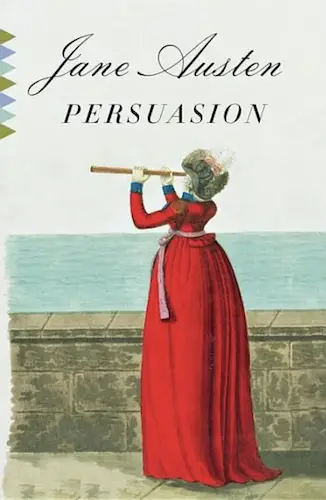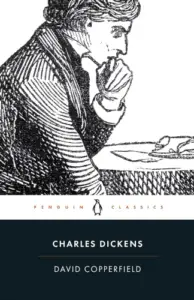Persuasion
Book Author: Jane Austen
Summary reviewed by:
Terrence Timmons
Terrence Timmons
Analyst
Bachelor of Arts (BA), University Of California, Santa Barbara 2019
With over 4 years of experience as an analyst. Terrence Timmons is committed to analyzing summaries without compromising on quality.
Persuasion: Summary
Why does true love wait? Jane Austen's Persuasion, set in the genteel circles of early 19th-century England, explores this very question. The story unfolds primarily in the rural countryside, moving through the picturesque county of Somerset and the bustling streets of Bath. At the heart of the novel is Anne Elliot, a 27-year-old woman who, years earlier, was persuaded to break off her engagement to Frederick Wentworth, a man of humble beginnings but great promise. Now, with the passage of time and the shifting tides of fortune, Captain Wentworth returns, wealthy and distinguished, but with a heart seemingly hardened by past disappointment.
Persuasion is Austen's final completed novel, and it reflects her most mature handling of themes such as the constancy of love, the pain of regret, and the societal pressures that often guide personal decisions. As Anne navigates her lingering feelings for Wentworth and the expectations of her snobbish family, she must decide whether to seize a second chance at happiness or resign herself to a life of quiet resignation.
This novel is an exquisite examination of missed opportunities and the enduring power of love. With Austen's trademark wit and keen social observation, Persuasion delves into the lives of its characters with a gentle yet piercing insight, making it a must-read for fans of classic literature and anyone who has ever wondered what might have been.
Spoilers (watch a short ad to reveal spoilers)
Persuasion: Genres
Fiction
Romance
Satire
Drama
Historical Fiction
Regency Literature
Persuasion: Main Characters
Anne Elliot: The novel’s protagonist, Anne is intelligent, kind-hearted, and deeply reflective. She values loyalty and constancy, demonstrated by her enduring love for Captain Wentworth despite their years of separation. Anne’s calm demeanor and quiet strength allow her to navigate the social pressures of her family with grace and dignity.
Captain Frederick Wentworth: A determined and ambitious naval officer, Wentworth is honorable and resilient. His values of perseverance and self-improvement are evident in his rise from obscurity to wealth and status, all while holding on to his love for Anne, despite feeling initially rejected by her.
Sir Walter Elliot: Anne’s vain and self-absorbed father, Sir Walter is obsessed with social status and appearance. He values superficial qualities, often to the detriment of his family’s financial stability. His reluctance to economize and his disdain for those of lower rank highlight his vanity.
Elizabeth Elliot: Anne’s elder sister, Elizabeth is haughty, prideful, and shares her father’s obsession with status. She values appearances and social connections, evident in her rejection of any suitors she deems beneath her social standing.
Lady Russell: Anne’s godmother and close family friend, Lady Russell is well-meaning but overly cautious. She values propriety and social status, which leads her to persuade Anne to break off her engagement to Wentworth years earlier, prioritizing social considerations over Anne’s happiness.
William Elliot: A distant cousin and the heir to the Elliot family estate, William is charming but ultimately duplicitous. He values wealth and social climbing, using his charm to ingratiate himself with the family while hiding his true intentions.
Persuasion: Themes
Love and Constancy: The enduring nature of true love is a central theme, explored through Anne and Wentworth’s rekindled romance. Despite years of separation and misunderstandings, their love remains strong, highlighting the power of constancy and emotional resilience.
Social Class and Mobility: The novel examines the rigid class structures of Regency England, with characters like Sir Walter and Elizabeth representing the obsession with status, while Wentworth’s rise through the naval ranks showcases the potential for social mobility.
Regret and Second Chances: Anne’s regret over being persuaded to reject Wentworth years earlier drives much of the novel’s tension. The theme of second chances is explored as Anne and Wentworth are given another opportunity to be together, reflecting the idea that it’s never too late to correct past mistakes.
Persuasion and Influence: The power of persuasion, particularly in the context of social expectations, is a recurring theme. Anne’s decision to reject Wentworth is heavily influenced by Lady Russell, highlighting how societal pressures can shape personal decisions, often with long-lasting consequences.
The Role of Women: The novel critiques the limited roles available to women in Regency society, particularly through Anne’s experiences. Her lack of financial independence and societal power contrasts with her inner strength and intelligence, emphasizing the constraints placed on women during the period.
Persuasion: What You Need to Know
(Contains Spoilers: Perfect for readers seeking a quick review.)
Persuasion follows the story of Anne Elliot, a woman of 27, who eight years prior had been persuaded to break off her engagement to Frederick Wentworth, a young naval officer without fortune or title. The novel begins with the Elliot family facing financial difficulties, largely due to the extravagant lifestyle of Anne’s father, Sir Walter Elliot. To economize, the Elliots rent out their family estate, Kellynch Hall, to Admiral Croft and his wife, who turns out to be Captain Wentworth’s sister.
Anne, who has never ceased to love Wentworth, is thrown into his company once again as he returns to the area, now a wealthy and distinguished naval captain. However, Wentworth appears cold and distant, still hurt by Anne’s rejection years earlier. Meanwhile, he begins to show interest in the Musgrove sisters, Louisa and Henrietta, further complicating Anne’s feelings.
As the story unfolds, Wentworth’s attentions shift from the Musgroves as he begins to realize that he still harbors deep feelings for Anne. The tension between them grows, culminating in a series of encounters in Bath, where both the Elliots and Wentworth have relocated. Anne’s feelings are further complicated by the arrival of her cousin, William Elliot, the heir to the Elliot baronetcy, who shows a romantic interest in her. However, William’s true character is soon revealed as duplicitous, interested more in securing his inheritance than in any genuine affection for Anne.
The pivotal moment comes when Anne, in a conversation with Captain Harville, speaks passionately about the constancy of women’s love, a conversation overheard by Wentworth. Moved by her words, Wentworth writes Anne a letter, confessing that his feelings for her have never wavered and asking for a second chance. Anne, who has loved him all along, is overjoyed by this revelation.
The novel concludes with Anne and Wentworth’s reconciliation and subsequent marriage. Their union symbolizes a triumph over societal pressures and past mistakes, reaffirming the themes of love’s endurance and the possibility of second chances. Their story ends on a note of hope and renewal, with Anne and Wentworth finally achieving the happiness they had once lost.
Persuasion: Methodology
At the heart of our summary lies a commitment to Quality and Integrity. Every word is carefully chosen to reflect the accuracy and essence of Jane Austen’s Persuasion, ensuring that the reader receives a faithful representation of the novel. Through Synthesizing Content, we distill the rich themes of love, social class, and regret, capturing pivotal moments that define the characters’ journeys. With User-Focused Content & Experience, we tailor our summaries to spark curiosity and provide insight, allowing readers to grasp the significance of the story while considering their own interest in the novel.


Persuasion
Date Published: December 20, 1817
Disclaimer: As an Amazon Associate I earn from qualifying purchases.




